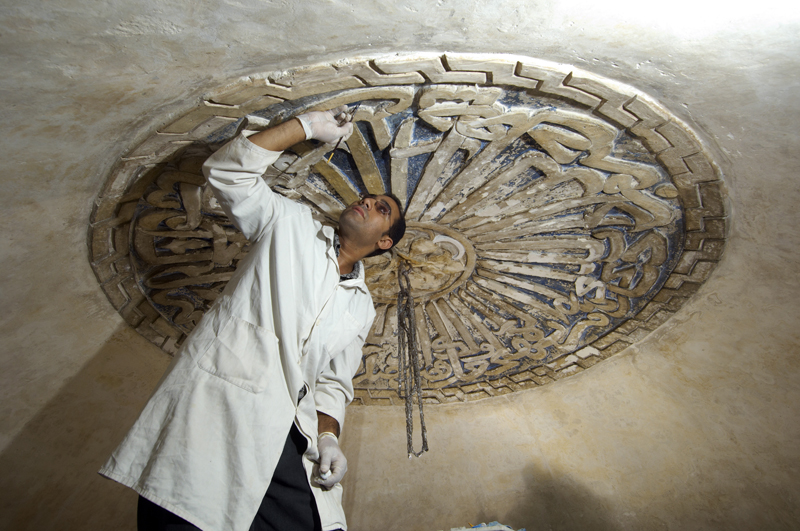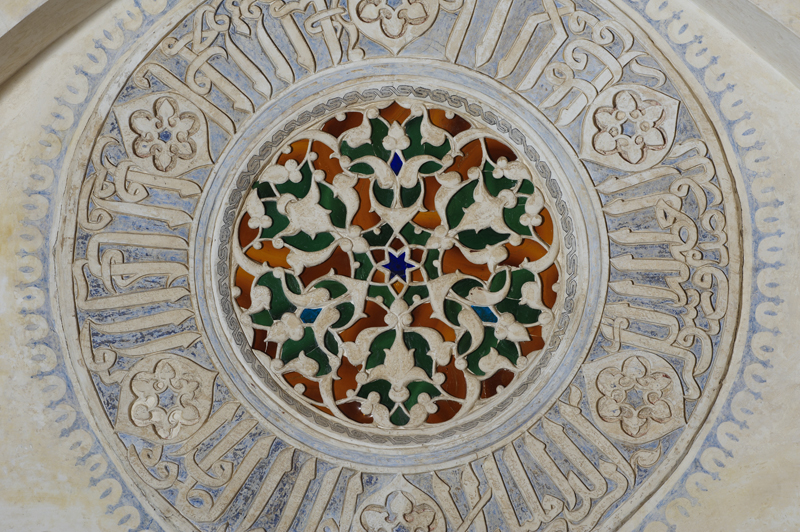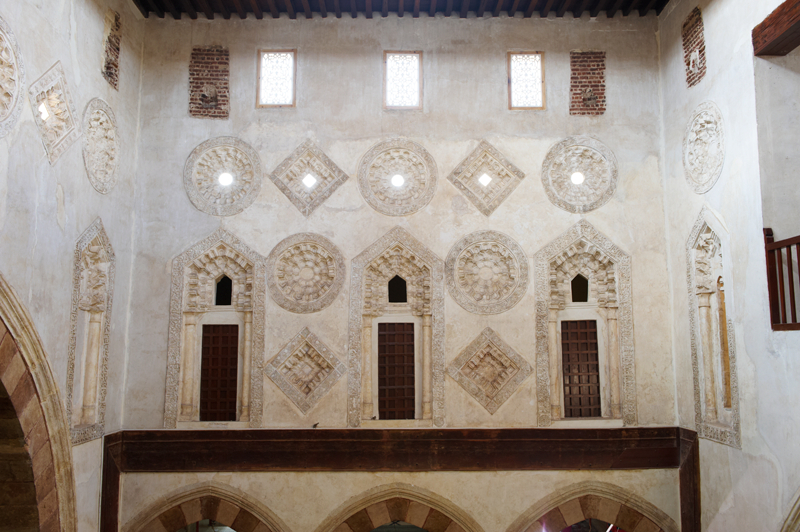- EraMamluk
- Project DirectorDina Bakhoum & Christophe Bouleau
- LocationCairo
- AffiliationAga Khan Trust for Culture
- Project SponsorUSAID
- Project Dates2006-2009
Historic Cairo was listed by UNESCO as a World Heritage Site in 1979. It houses a dense and invaluable collection of built urban heritage and archaeology from Cairo’s medieval period. At the southern extension of this remarkable area is a sprawling neighborhood known as al-Darb al-Ahmar, which contains a significant number of monuments, homes and landmarks from as far back as the 10th century. The Aslam al-Silahdar Mosque is one of the more prominent landmarks in al-Darb al-Ahmar, and it was the focus of a thorough and widely heralded conservation project conducted through a partnership between the American Research Center in Egypt, the Aga Khan Trust for Culture, the Egyptian Supreme Council of Antiquities and the U.S. Agency for International Development.
The project ran from 2005 to 2009 and took a multifaceted approach that addressed structural and aesthetic improvements to the monument and hired skilled laborers and craftsmen from the surrounding neighborhood. In this respect, the conservation of Aslam al-Silahdar Mosque engaged the community of al-Darb al-Ahmar with their heritage and encouraged certain skills and knowledge to pass down from one generation of craftsmen to the next. Community involvement and training are pivotal elements of modern cultural heritage management and conservation and have become standard procedure in recent ARCE projects.
Aslam al-Silahdar Mosque is not only notable for its location in a historic neighborhood but is also an important legacy of Cairo’s medieval past. Built in 1344 by Baha al-Din Aslam – a Mamluk prince with considerable political and social standing in the Mamluk royal court who rose to the rank of Silahdar, meaning sword-bearer – the mosque was originally part of a complex that contained horse stables, tenement housing and a small palace or private home. The mosque is the only piece of the complex still standing, but its architecture and decor suggest that al-Baha’i was a connoisseur of fine design and materials. Stone-cut mosaic floors are in perfect harmony with wooden vaulted ceilings and marble columns. Stucco ornamented walls are finished with glittering colored glass mosaics. And the mihrab, or prayer niche, is defined by finely cut and inlaid marble in jewel tones. The exterior of the mosque is also lavishly appointed with inlaid marble mosaic and decorative stonework and inscriptions on all four façades.
Unfortunately, while this exquisite craftsmanship was still discernible, much of it had deteriorated prior to the work that began in 2005. Conservators had their work cut out for them. Repairs first began on the exterior of the mosque and the interior was used as a workspace to clean and conserve smaller movable components like doors, wooden paneling, metal grilles and windows. A geotechnical survey assessed the mosque’s structural stability and cleaning and documentation work began on the exterior façades, roof, dome and minaret. A new ablution was also constructed to replace the original one, which had posed a conservation risk to the mosque due to water leakage.
The team removed and replaced decayed stones and cleaned the minaret and dome with micro sandblasting. They replaced the wooden roofing and then carefully insulated against the weather and moisture, which had previously caused damage to the mosque’s interior. Additionally, community shops located in the western wall of the mosque were emptied, repaired and then returned to their owners.
Meanwhile, in the mosque interior, the project plastered and repainted walls, installed new windows and conserved and reinstalled original inlaid doors and wooden paneling. Cracks in the walls were consolidated and new brickwork fitted where necessary to reinforce the walls and fill gaps. Finally, conservators cleaned and fully restored all of the mosque’s stunning gypsum and stucco decorations to their original vibrancy.
While words do little justice to the impressive result of the conservation work on Aslam al-Silahdar mosque, photo documentation of the project speaks to the skills and dedication of the conservators and craftsmen that worked on the monument for years. Today, the mosque is still in daily use as a community and religious hub for al-Darb al-Ahmar, a great source of pride to its neighbors.



